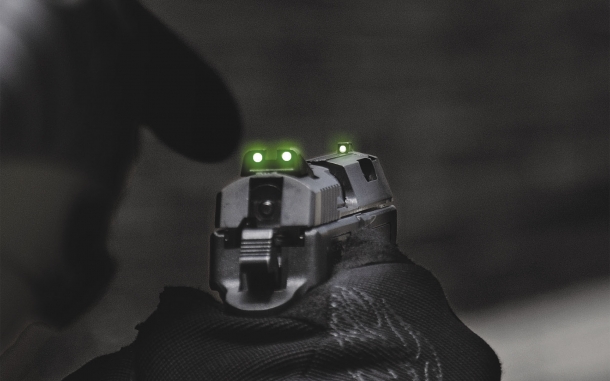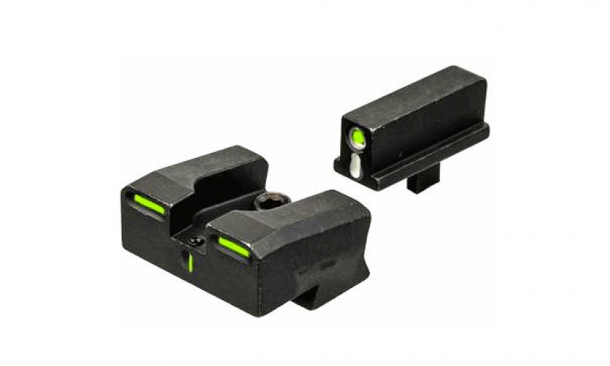About Tritium and sights
We know about night sights and how they glow thanks to their "Tritium" content. But what is, exactly, Tritium? Where does it come from and why it's one of the most expensive materials on earth, with Pros and Cons.

Meprolight FT Bullseye tritium sights
Tritium sights are a must on a modern handgun meant for police, military or self defense use. We know they glow in the dark, making the sights visible at night (hence the name) and we know they do that thanks to a substance called "tritium".
It's so important that several companies offer many different products and a lot of different designs, but the tritium is the common denominator.

Tritium is used in sport and tactical watches as well
Tritium is an isotope of hydrogen: it's actually nothing more than an atom of hydrogen (usually the simplest atom in the universe: one proton, one electron) with two added neutrons.
As it happens, tritium is a radioactive isotope of hydrogen, but there's no reason for alarm.
What happens is that a very small quantity of beta radiation is emitted: beta radiation is very weak and is absorbed by the tritium container, usually a small glass vial, lined with phosphor.
When the beta radiation hits phosphor, it emits light. It's not a lot of light, and tritium sights can be seen glowing only in the dark.
There's no health hazard at all, as tritium is contained in the sights and, even in the very unlikely event of breakage, an extremely small amount of tritium is contained in the vial and would disperse in harmless concentrations in a matter of minutes.
One of many: Trijicon H3 Tritium sight

Handugns take particular advantages in using Tritium sights

One of many: Meprolight R4E Tritium sight
PROs
Tritium is a self contained, autonomous light source: it doesn't require batteries, it doesn't need to be "charged" like phosphor night sights, it doesn't need to be "switched on" and is extremely compact.
CONs
Tritium is very expensive, coming at about 30.000$ per gram. This explains the high price of tritium sights. Even the teeny weeny amount of tritium in the sights costs a lot. Moreover tritium has a half-life of 12.5 years, meaning that it takes 12.5 years for a given amount of tritium to convert half of its mass in non-radioactive helium-3. This, in practical terms, means that in 12.5 years the sights will emit half the light they emitted when new. Compared to the many advantages provided, having to get a new set of night sights every 15-20 years is not such a big problem.



